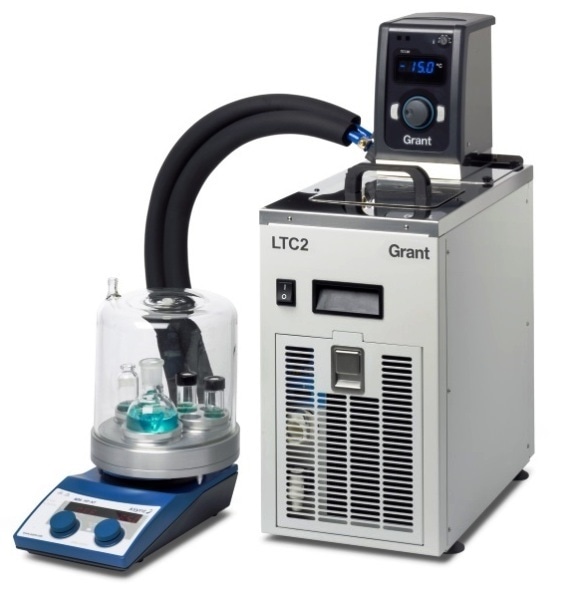The DrySyn SnowStorm range from Asynt offers an attractive solution for scientists looking to undertake low-temperature chemical reactions and studies.

Unlike traditional reaction cooling methods, including ice, dry-ice and liquid nitrogen; accurate and prolonged temperature control on a DrySyn SnowStorm is regulated by an external thermostatic circulator. The use of such a temperature control system not only eliminates the risk of temperature fluctuations due to perishable coolants but can also improve your labs sustainable use of resources.
In addition to allowing unattended operation (even overnight), active temperature control on the DrySyn Snowstorm range also enables responsive control of exothermic reactions, constant rate cooling to enhance polymorph studies and significant improvement in reaction reproducibility.
Beneficially the ability to agitate and cool in parallel using a DrySyn Snowstorm can also lead to improved productivity.
The DrySyn Snowstorm systems deliver precise temperature control of reactions from -60 to +150 °C and have been designed to be user-friendly and practical, with a small benchtop footprint.
The DrySyn SnowStorm ONE enables controlled chemistry to be conducted on single flasks up to 1 liter in size, whilst the SnowStorm MULTI allows for up to three 100 ml parallel reactions to be undertaken.
The use of a weighted silicone seal prevents the formation of ice around the glassware on these systems. For smaller scale experiments, the DrySyn Snowstorm Reactor allows increased throughput and screening of up to 27 vial-based reactions. Purging the dome with nitrogen / argon prevents the formation of ice around the vials at sub-ambient temperatures.